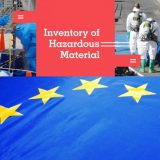OTTAWA, ON, June 15, 2022 /CNW/ – Through the Oceans Protection Plan, the Government of Canada is working in partnership with Indigenous coastal communities to improve safety on the water. Today, the Minister of Fisheries, Oceans and the Canadian Coast Guard, the Honourable Joyce Murray, announced $2 million in funding for ten communities through the Indigenous Community Boat Volunteer Program to buy boats and related safety equipment.
The Canadian Coast Guard launched the Indigenous Community Boat Volunteer Program in 2017, under the Oceans Protection Plan, to strengthen coastal communities’ capacity to participate in maritime search and rescue activities. Combined with training in search and rescue, the Program helps Indigenous communities in coastal areas become new members of the Canadian Coast Guard Auxiliary. Increasing local capacity to respond effectively to emergencies makes the waters near these communities safer for everyone.
A total of $2 million in funding has been provided to ten communities: Hamlet of Pangnirtung in Nunavut; Ka:’yu:’k’t’h’/Che:k’tles7et’h’ First Nations and Nisga’a Nation in British Columbia; Whitefish River First Nation and Wiikwemkoong Unceded Territory in Ontario; Cree Nation of Waskaganish in Quebec; MAWIW Council Inc. (representing Elsipogtog First Nation and Esgenoopetitj First Nation) in New Brunswick; We’koqma’q First Nation in Nova Scotia; and, Miawpukek First Nation and Makkovimuit Trust Incorporated (representing the Inuit communities of Nain and Makkovik) in Newfoundland and Labrador.
To date, 40 Indigenous coastal communities or organizations on all three coasts have received over $12 million in funding to buy or retrofit boats and related safety equipment. Under the next phase of the Oceans Protection Plan, the program will continue to help communities build, enhance, or sustain their capacity to respond to marine search and rescue incidents.
The Oceans Protection Plan is the largest investment ever made to protect Canada’s coasts and waterways. This national plan is creating a stronger marine safety system that provides economic opportunities for Canadians today, while protecting our coastlines and clean water for generations to come. This work is being done in close collaboration with Indigenous peoples, local stakeholders and coastal communities.
Quotes
“Indigenous coastal community members play an important role in marine safety. They are often the first to arrive on the scene when incidents happen in remote coastal areas. Working together, the Canadian Coast Guard and Indigenous partners are making communities safer for all.”
The Honourable Joyce Murray Minister of Fisheries, Oceans and the Canadian Coast Guard
“The Indigenous Community Boat Program has been a positive experience for Whitefish River First Nation and the Canadian Coast Guard’s commitment to our community’s safety is evident in the efforts of the staff involved in the program.”
Stephen McGregor, Marine Liaison Officer, Whitefish River First Nation
“Having resources and training to increase the ability to respond and keep our community safe is essential. We are a very remote community where traveling on the water is part of our daily lives. It is much appreciated that our community is receiving support from the Canadian Coast Guard and Coastal Nation Coast Guard Auxiliary.”
Steinar Våge, Project & Program Development, Ka:yu:’k’t’h’ / Che:k’tles7et’h’ First Nations
“The Community Boat Program has benefited the community greatly in a number of areas. The most obvious is having a vessel that is suitable for Coast Guard Auxiliary operations in our region that can help boaters in distress. This is a significant asset for us and we would not have been able to obtain a vessel and equipment like this without the program. The community is delighted to have participated and been successful when availing of the program. Secondly, the training that comes with our partnership with the Canadian Coast Guard. This training gives our auxiliary members an excellent skill set that equips them to play a key role as auxiliary members. The full menu of training that comes with the program is a big benefit to them not only for the Coast Guard Auxiliary but also from a personal and professional point of view.”
Shayne MacDonald, Miawpukek First Nation
“We’koqma’q First Nation is pleased to have a Canadian Coast Guard’s Indigenous Community Boat Volunteer Program here in the Unama’ki District. As well, very pleased with the recent funding of a new storage facility for the community vessel. The presence of this vessel and highly trained crew in We’koqma’q First Nation Area will provide reassurance to all boaters and vessel operators within the Bras D’or Lakes Area, if they need assistance.”
Bobby Gould, We’koqma’q First Nation
“Makkovik Inuit Community Government and the local Makkovik Ground Search and Rescue Team would like to send along our heartfelt thank you to the Nunatsiavut Government and the Canadian Coast Guard for their leadership that shows what working together for the betterment of our communities on the north coast of Labrador really can do. There is not only much more local marine traffic in our region but also much more private pleasure craft plying our waters from other regions. The local CCG Auxiliary members with this new 28ft rescue boat, local CCGA knowledge and training will supplement the CCG in our isolated and remote location in Canada with much quicker initial response to people in distress.”
Barry Andersen, AngajukKak Makkovik, Nunatsiavut, Newfoundland and Labrador
Quick Facts
- The boats and other equipment bought under this program meet the standards of the Canadian Coast Guard Auxiliary and Transport Canada.
- In partnership with the Canadian Coast Guard, Indigenous communities, as members of the Auxiliary, provide marine search and rescue services, promote marine safety, and conduct coastal safety patrols.
- The Canadian Coast Guard Auxiliary is a national non-profit organization of 4,000 volunteer members with access to 1,100 vessels that boost the Government of Canada’s maritime search and rescue response capacity.
- The Canadian Coast Guard Auxiliary responds to approximately 25 per cent of maritime calls for assistance annually, providing an often life saving service.
Associated Links
Stay Connected
SOURCE Canadian Coast Guard







